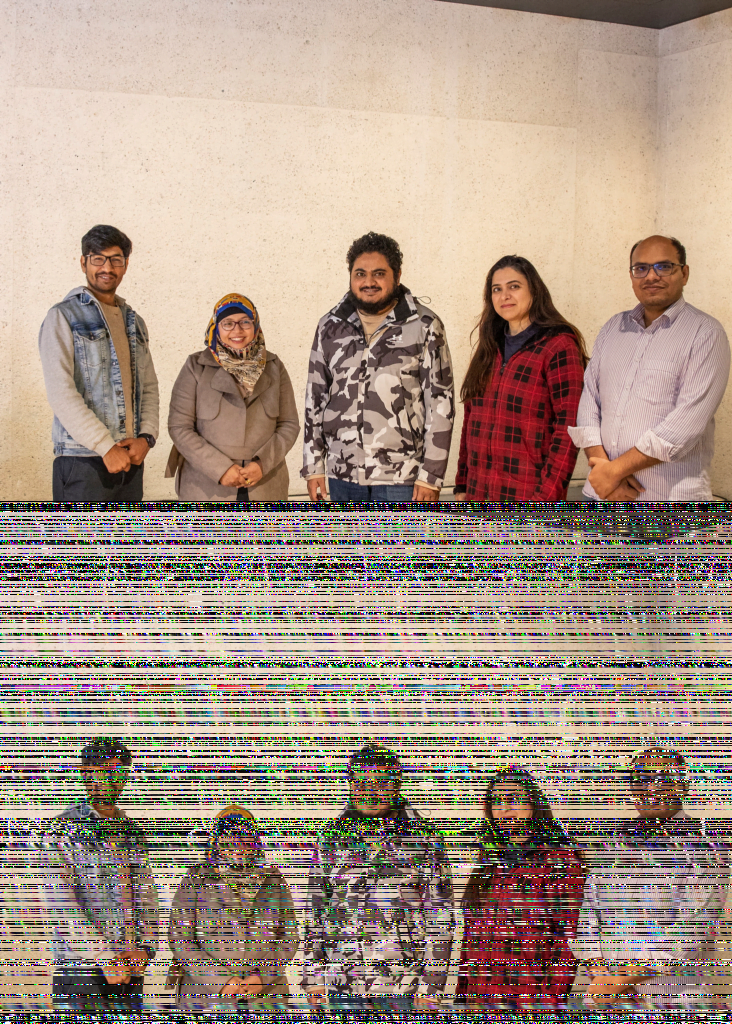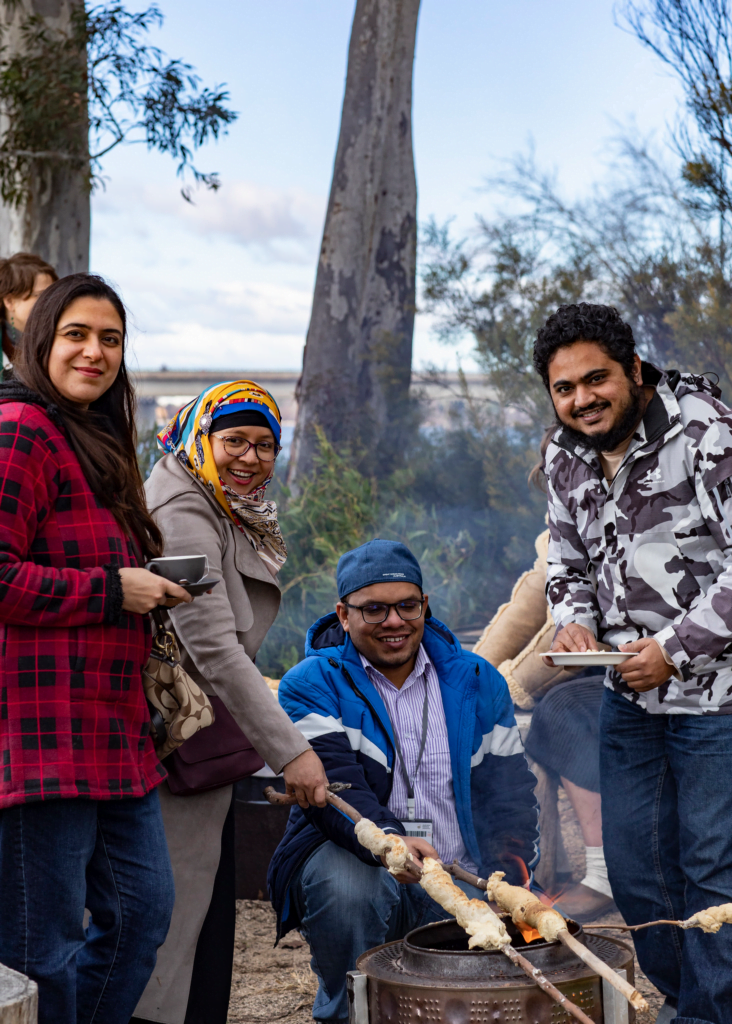Australia
Australia Awards scholars in Australia have been participating in events ahead of NAIDOC Week, an important fixture in the Australian calendar.
NAIDOC Week is a celebration of the history, culture and achievements of Aboriginal and Torres Strait Islander peoples and presents an opportunity for all in Australia to learn about the diversity of First Nations cultures and history.

Awardees in Canberra gathered at the National Gallery of Australia (NGA) to view an art installation featuring hand-carved grinding stones by Wiradjuri and Kamilaroi artist Jonathan Jones. Discussing his work and the derivation of his artistic concept, Jonathan was joined by his creative collaborator Beatrice Murray (Wiradjuri) and author Uncle Bruce Pascoe (Yuin / Bunurong).
Scholars learned of the use of the stones in a historical context. ‘These stones ground the grains that fed our peoples. The fact that the grinding stones last for millennia demonstrates the resilience of our history and our enduring connection to tradition,’ Jonathan said. After listening to the talks, the audience listened to the soundscape accompanying the installation, which included lyrics by Uncle Stan Grant Sr AM (Wiradjuri) sung by Beatrice Murray.
Later scholars gathered in the Sculpture Garden of the NGA to partake in the First Nations tradition of preparing and eating damper. A bread made from the flour of ground grains cooked over hot coals, damper is contemporarily made with wheat flour. Uncle Bruce Pascoe brought Themeda triandra (kangaroo grass) grains, a primary food source for south-east First Nations people. Scholars cooked and enjoyed the damper while sharing their stories with Uncle Bruce and Beatrice Murray in the gardens. Bangladeshi scholar Sharmin Akther said ‘… the experience reminded me of the usage of grinding stones in different places worldwide, including Bangladesh”. Of meeting Uncle Bruce, Nepali scholar Hemraj Shahi said, “I’ve read his book [Dark Emu] and was moved by his research about the agriculture of the First Nations People.” Sharing his own recent experience of an on Country experience in the Northern Territory and his passion for improving forestry practices back home, Hemraj enjoyed sharing his thoughts directly with Uncle Bruce.

Later scholars gathered in the Sculpture Garden of the NGA to partake in the First Nations tradition of preparing and eating damper. A bread made from the flour of ground grains cooked over hot coals, damper is contemporarily made with wheat flour.
Uncle Bruce Pascoe brought Themeda triandra (kangaroo grass) grains, a primary food source for south-east First Nations people. Scholars cooked and enjoyed the damper while sharing their stories with Uncle Bruce and Beatrice Murray in the gardens.
Bangladeshi scholar Sharmin Akther said ‘… the experience reminded me of the usage of grinding stones in different places worldwide, including Bangladesh”. Of meeting Uncle Bruce, Nepali scholar Hemraj Shahi said, “I’ve read his book [Dark Emu] and was moved by his research about the agriculture of the First Nations People.”
Sharing his own recent experience of an on Country experience in the Northern Territory and his passion for improving forestry practices back home, Hemraj enjoyed sharing his thoughts directly with Uncle Bruce.
Scholars then enjoyed a private tour of the NGA’s First Nations gallery, starting with the collection sourced from Tasmania and then moving to detailed art from the Northern Territory. Of interest were the recognisable colours of the land and the juxtaposition of traditional First Nations art with contemporary Eurocentric art like that of Albert Namatjira and Richard Bell.

Scholar Sudharma Tanaweera Arachchig of Sri Lanka was awestruck by the experience. “As I stepped into the First Nations Gallery, the vibrant colours and intricate patterns adorning the artwork immediately captivated my senses. Each piece tells a story, connecting me to Australia’s First Nations peoples’ ancient wisdom and rich cultural heritage.”
Source: Australia Awards

